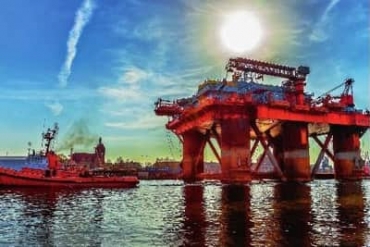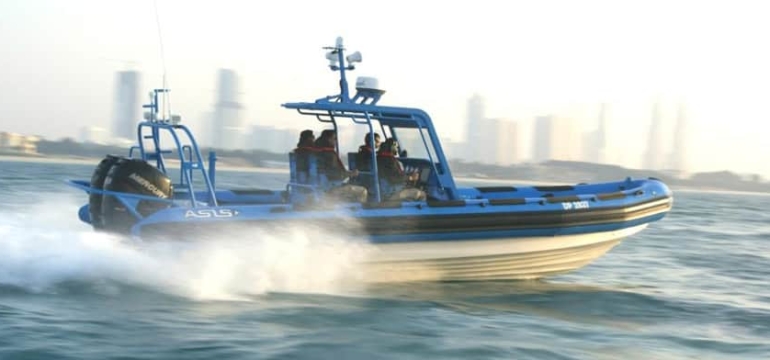ASIS Boats CEO Roy Nouhra Talks About
The Challenges Of Designing Vessels For The Middle East’s Offshore Projects To Oil & Gas Middle East Magazine In The Article “Keeping The Industry Afloat”.
How are ASIS boats used in the Middle East’s oil & gas industry?
ASIS Boats has long standing relationships with the oil and gas industry and over the last eight years we’ve worked with some of the world’s leading companies in this sector, such as Saudi Aramco and Adnoc, Oman LNG, Kuwait Oil Company, Total E&P Kurdistan BV.
Our Rigid Inflatable Boats are used for a variety of purposes to fulfill specific requirements- from providing logistical support and field services to transporting personnel to oil and gas drilling rigs and providing services to dredging and pipeline projects.
We design and manufacture a number of boats that provide tailored solutions for the oil and gas sector. Products include : shallow water work boats to support oil and gas explorations, offshore Lifeboats, Spill Response Boats, Fire Fighting Boats, Security and Patrol Boats, Rescue Boats, Man Overboard Rescue and Seismic Survey Boats, as well as work boats that enable rig maintenance and repair work.
What separates them from the competition?
ASIS Boats are designed and manufactured according to the very particular needs of each of its customers. This means that each craft is tailored with specific features that ensure it performs exactly the way the customer needs it to. Whether special event -weight distribution storage units for dive tank or powerful on- board pumps for fire fighting crafts. ASIS Boats ensure the ultimate seaworthiness, safety and stability in the most adverse conditions, in all climates and at all speeds.
Because ASIS Boats is a full turnkey operation, the team is able to assume total control over every element of design, manufacturing, delivery and after-sales service. It also means that our delivery turnaround is the most efficient in the industry.
What are the challenges in designing and manufacturing boats for the oil and gas industry?
The working environment for the industry is tough and it certainly tests both personnel and the tools required. It makes business sense for companies in the field to make sure that their equipment is as efficient, reliable and hard working as possible. By manufacturing watercraft to specification, as ASIS Boats is able to do, companies can ensure they have exactly the right craft able to service a specific task, thereby reducing cost, time and room for error and increasing efficiency, efficacy and output.
“We were delighted to know that a ‘made in the UAE’ brand is being recognised as a leader in the global industry” What trends do you see developing in the industry?
There are a number of trends that will shape the industry in the GCC. The three that we believe will have the greatest impact are as follows.
The need for high-quality boats to be of international quality, specification, and standard, but manufactured in the GCC and tested against the challenging environment in the region. This comes as a result of the oil and gas industry becoming more astute and is reflected in the purchasing decisions being made and the desire for superior products.
We are seeing a growing numbers of oil and gas companies, both onshore and offshore, investing in maritime security teams. As a result they are purchasing specialized boats from us, and ensuring their personnel are well trained.
The final trend is based on geological and under-sea surveys. There is a growing requirement for these to be conducted using unmanned boats; something we have worked on with the military in the past. We will introduce unmanned boats to the oil and gas industry in 2015, and will enable the industry to capture more accurate data and therefore increase productivity.
What predictions do you have for 2015?
The trends we have discussed will shape the industry in 2015. In particular the emergence of unmanned boats specifically designed and built for the oil and gas industry, will make a lasting impact and change the way the industry works.
Pages in Oil & Gas Middle East Magazine (pages 27 and 28).




